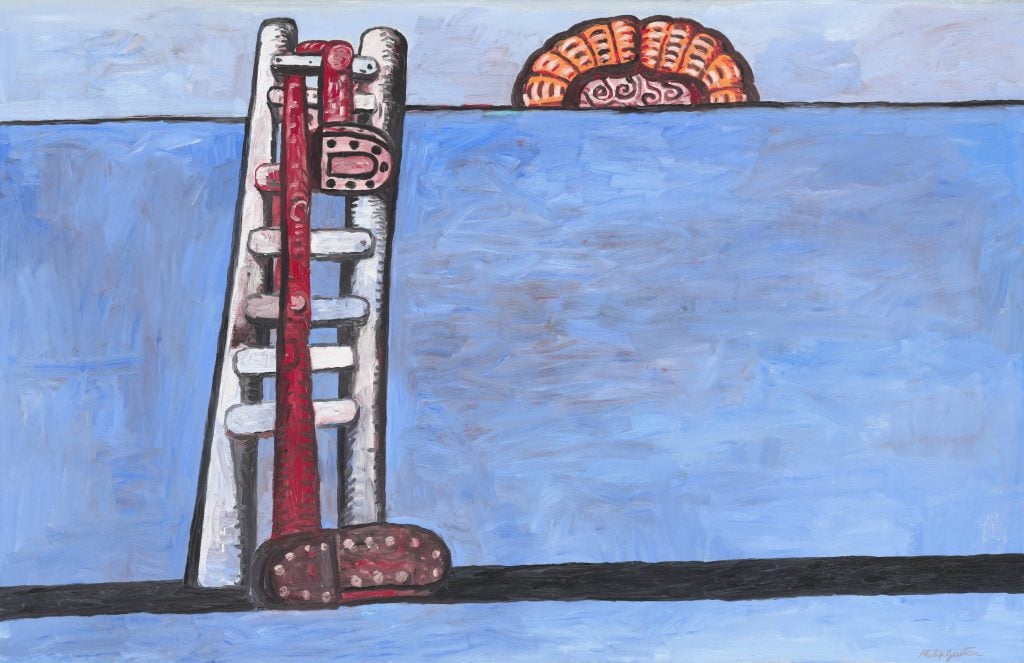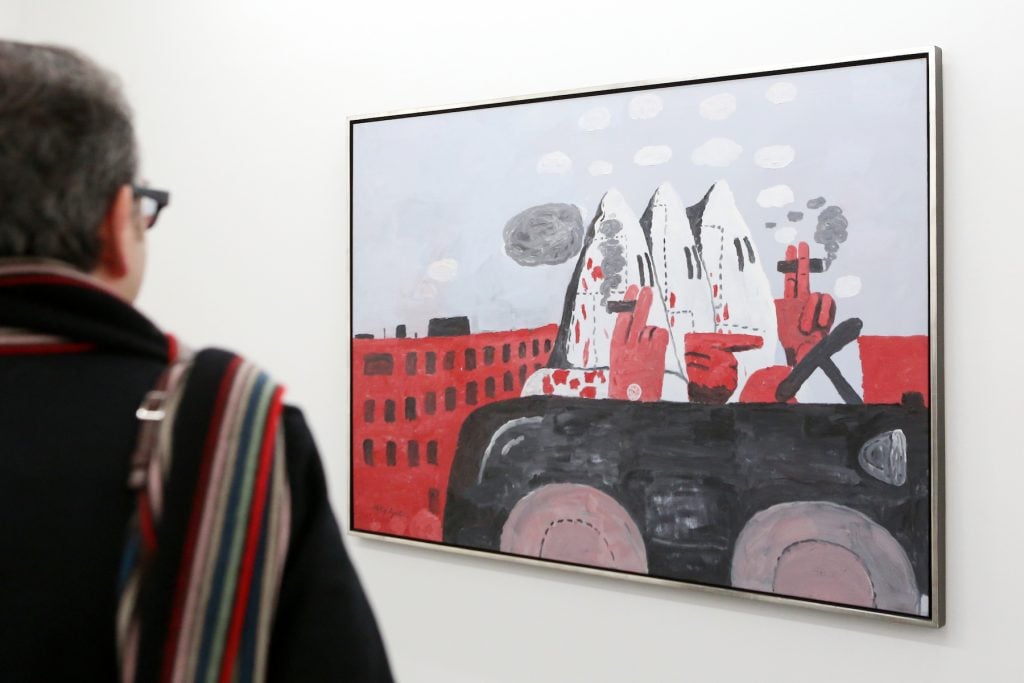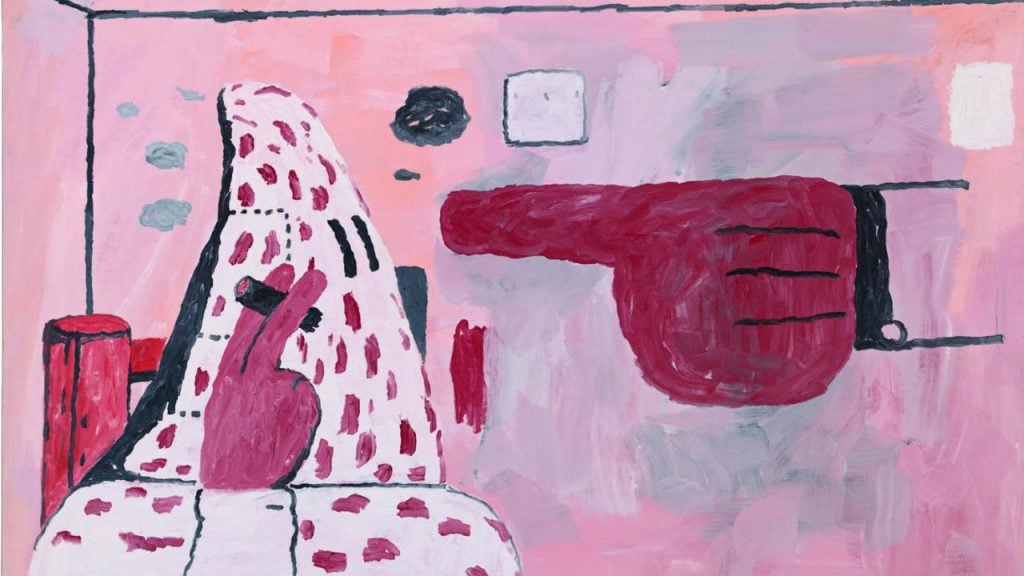Art & Exhibitions
The Postponed Philip Guston Show Will Now Open in 2022 With New Contributions From Artists and Historians
Concern over the subject matter of Guston's work prompted organizers to delay the retrospective, originally to 2024.

Concern over the subject matter of Guston's work prompted organizers to delay the retrospective, originally to 2024.

Sarah Cascone

A massive Philip Guston retrospective, “Philip Guston Now,” whose postponement sparked an uproar, will now be “Philip Guston in Two Years.” The National Gallery of Art in Washington, DC, has confirmed the show will open in 2022, not 2024, as previously stated.
“Navigating the exhibition schedules of four institutions, amid a global pandemic, has been complicated, but we are glad to be able to share a new schedule for the tour of ‘Philip Guston Now’ beginning in 2022,” said NGA director Kaywin Feldman in a statement. “This additional time will allow us to slow down, get past COVID, and bring the gallery’s community together in person for challenging conversations that will help inform how we rethink the exhibition.”
The new timeline will see the show debut at the Museum of Fine Arts, Boston, from May 1, 2022 to September 11, 2022. It will travel to the Museum of Fine Arts, Houston from October 23, 2022 to January 15, 2023 and to the NGA from February 26, 2023 to August 27, 2023. The tour wraps up with an international stop at London’s Tate Modern from October 3, 2023 to February 4, 2024.
The four museums behind the show had announced last month that they would postpone the opening “until a time at which we think that the powerful message of social and racial justice that is at the center of Philip Guston’s work can be more clearly interpreted.”

A visitor looks at the work Riding Around by Philip Guston in Hamburg, Germany in 2014. Photo by Bodo Marks/picture alliance via Getty Images.
News of the delay of the exhibition, which was initially supposed to open in early 2020 (before an earlier lockdown-induced postponement), sparked widespread outcry among artists, curators, and others who accused the organizers of self-censorship.
A petition demanding the show open without further delay attracted signatures from more than 2,600 art professionals, while one of the organizing curators, the Tate’s Mark Godfrey, was reportedly suspended over social media comments calling the decision “patronizing to viewers.”
In pushing back the show, the museums were particularly concerned—especially in the wake of the Black Lives Matter protests that swept the US over the summer—about the reception of Guston’s paintings of members of the Ku Klux Klan, which show hooded figures going about their daily lives.

Philip Guston, Scared Stiff (1970), sold by Hauser & Wirth for $15 million at Art Basel in 2016. The Estate of Philip Guston, courtesy of the estate and Hauser & Wirth.
“Making the decision to postpone this show was not, as some have claimed, the silencing of an artist,” said MFA Boston director Matthew Teitelbaum in a statement. “I wanted to take the extra time, at this unpredictable moment, to make sure that Guston’s voice not only was heard but that the intent of his message was fairly received.”
While Guston’s revolutionary visual language, fueled by his anti-racist beliefs, “was, and is, his inspiring achievement,” Teitelbaum added, “it became very clear to me that these images were being received by others in a far different light than the way in which I understood them. For some, the images were painful.”
The original show’s catalogue included texts commissioned from African American artists Glenn Ligon and Trenton Doyle Hancock, who incorporates Klan figures inspired by Guston’s work into his paintings. But organizers determined they needed more time—and a more diverse team—to contextualize the images further.
The revised exhibition will incorporate reflections from more contemporary artists on what these historic works mean to them. Historians and other experts will speak about Guston’s KKK paintings in video clips. Visitors, too, will be invited to share their reactions.
The institutions have not yet decided if any Black curators will be joining the exhibition’s currently all-white curatorial team, but Teitelbaum said there will be “more diverse voices contributing to the preparation of historical framing materials that allow us to appreciate the context in which Guston worked and achieved his vision.”
Guston’s daughter Musa Mayer, who emphatically opposed the postponement, said in a statement that she was “cautiously optimistic” about the new schedule and revised approach.
“I believe it is essential for the exhibition to contextualize the depth of my father’s social conscience, allowing the hooded figures and other imagery to reclaim their meaning, including but also moving beyond specific references to the Ku Klux Klan,” she said. “What we need now, as so many have pointed out, is to actually see Philip Guston’s paintings and drawings in all their complexity, without reductive characterizations.”